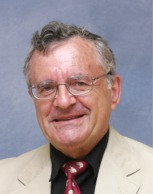Cicadas & Prime Numbers
By Shlomo Maital

Cicadas and prime numbers! What is the connection?
In the US, people are flocking to Illinois, where two ‘broods’ of cicadas are about to emerge. Cicadas are quite amazing. They emerge from underground, when the temperature of the oil at a depth of six inches reaches 64 degrees F. They emerge almost all at once, climb into the trees, and the males ‘sing’, to attract females. After mating, the cicadas die and fall to the ground. The females first lay their eggs in cracks in the trees. Nymphs emerge (hatch), fall to the ground, burrow underground, and spend 17 years, or 13 years, munching on tree roots…only to emerge, together, and repeat the cycle.
Cicadas are harmless. They don’t bite. They just sing. And the chorus of cicadas all singing together can be deafening.
Cicada tourists are converging on Illinois, because two separate ‘broods’ of cicadas are about to emerge: the ’13-year’ brood and the ’17-year’ brood. Why are they emerging together? Herein lies the link with prime numbers.
The last time the two broods emerged together was in 1803. Thomas Jefferson was in the third year of his Presidency (1801-1809). That was 221 years ago.
So, the number 221 is formed by multiplying two prime numbers, 13 and 17. Since 1803, the ’13 year’ cicadas have emerged 17 times. Since 1803, the ’17 year’ cicadas have emerged 13 times. This IS THE FIRST TIME THEY ARE EMERGING TOGETHER SINCE 1803. 17×13=221.
And it won’t happen again until….2021 + 221 = the year 2242.
Now, you ask – how do they KNOW that 13 years, or 17 years, have passed? And why do they spend so long underground? And isn’t it sad that they live in darkness, underground, for so long, just to have a few short days or weeks above ground, to mate..and die?
We don’t know. Evolution, it seems, has taught them that if they emerge all together, trillions of them, the birds, racoons and other creatures will have a once-in-a-lifetime feast…but there are so many cicadas, most will live to mate and reproduce.
Where does the word cicada come from? It is Latin, meaning tree cricket.
In Jewish tradition, males become ‘bar mitzvah’ (those eligible for and worthy of fulfilling the Jewish precepts, or ‘mitzvahs’) at age 13. I like to think of the 13-year cicadas as celebrating their bar mitzvahs, and fulfilling the key Jewish commandment known in Hebrew as ‘pru u’rvu’ (be fruitful and multiply).
And the 17-year cicadas? Well, they’re almost old enough to vote. Maybe it’s best they don’t stick around, to see the elections in half the world this year, 2024 — we are going to have to hold our noses.










